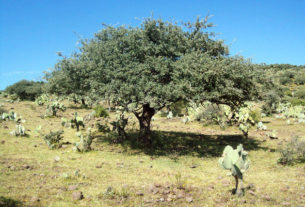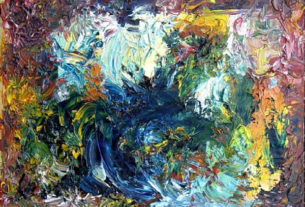The Spanish returned.
With Cuitlahuac, the brother of Moctezuma who had advised against welcoming the Conquistadors, now elected as their king, the Aztecs were confident that any attempted return would be met by force and repelled. For some eight Aztec months (a month was 20 days and 18 made a year) all went well. The temple was rebuilt and things returned to normal. But in the thirteenth month, disaster struck The Aztecs report reads: “A great plague broke out in Tenochtitlan. It lasted for seventy days, striking every where in the city and killed vast numbers of people. Sores erupted on our faces, our breasts, our bellies.”Even the new king who they had counted on to keep them free, ultimately fell victim to the plague. It was Smallpox, brought by the invaders.
The story of the final capture of Tenochtitlan is too well known to repeat. Although the Aztec report on the Conquest of Mexico contains many vivid, detailed accounts of each and every battle, in the final analysis, the real value of their point of view lies not in the reporting of day-to-day events, but rather in what it reveals about the Aztecs themselves. Their strengths and their weaknesses, and their own evaluation of Moctezuma give valuable insight into how a comparative handful of Spaniards, outnumbered at least ten to one in almost every engagement, were able to destroy a nation that had built an Empire reaching from the Atlantic to the Pacific with perhaps as many as 5,000,000 subjects.
Additionally, the Aztec account of the Conquest reveals a side of their culture at which no historian has ever done more than hint. The Spaniards came with the dual mission of seeking wealth and spreading Christianity. Horrified by human sacrifice and cannibalism, they totally ignored other aspects of the culture. To them, the Aztecs were barbaric savages. Basically, later historians have done the same. With the fighting done and the Spaniards in control, the Aztecs account of the final phases of the conquest are partly in poetry that can only be described as “epic.” When we read this, the bloodlust of their Gods slips into the background and human beings emerge.
Here is one description of the final days of the Conquest:
Broken spears lie in the roads;
We have torn our hair in our grief
The houses are roofless now, and their walls
Are red with blood.
Worms are swarming in the streets and plazas,
And the walks are spattered with gore
The water has turned red, as if it were dyed
And when we drink it,
It has the taste of brine
We have pounded our hands in despair
Against the adobe walls,
For our inheritance, our city, is lost and dead
The shields of our warriors were its defense.
But they could not save it.
We have chewed dry twigs and salt grasses:
We have filled our mouths with dust and bits of adobe.
We have eaten lizards, rats and worms
When we had meat, we ate it almost raw.
Almost biblical in tone, it pictures a people more sensitive than the reports stigmatizing them as blood thirsty savages. Here is their description of the fall of Tenochtitlan as taken from Cantares Mexicanos in the National Library of Mexico, probably written in 1523. They are truly elegies that reveal feelings that to this day are part of the character of the surviving indigenous people.
The Fall of Tenochtitlan
Our cries of grief rise up
And our tears rain down
for Tlatelolco is lost.
The Aztecs are fleeing across the lake
They are running away like women
How can we save our homes, my people
The Aztecs are deserting the city
The city is in flames and all
is darkness and destruction
Weep my people
Know that with these disasters
We have lost the Mexican nation
The water has turned bitter
Our food is bitter
These are the acts of the Giver of Life.
What is most interesting about this particular poem is that is seems that the poet is distancing himself from the “Aztecs” who he accuses of abandoning the city and the people. Then he refers to the whole matter being an act of the “Giver of Life.” It has been recorded that the Aztecs did recognize a single supreme God, addressed by that title, but he was not worshiped. Instead it was the bloody Huitzilopochtli, to whom they paid tribute. Is it possible that he had been forced on the common people by a fanatical priesthood and that the worship of the “giver of life” persisted, perhaps secretly? Let me quote from one more short poem that lends some credence to the possibility, that some secret worship of the “giver of life” did persist.
Flowers and Songs of Sorrow
We know it is true
That we must perish
For we are mortal men
You, the Giver of Life,
You have ordained it
We wander here
and there in our desolate poverty
We are mortal men
We have seen bloodshed and pain
Where once we saw beauty and valor
We are crushed to the ground
We lie in ruins
In Mexico and Tlatelolco
Where once we saw beauty and valor
Have you grown weary of your servants
Are you angry with your servants
Oh Giver of Life.
At the very least, these post-conquest poems seem to indicate that the survivors of the conquest had become disillusioned with their old religion and were likely candidates for conversion to Christianity.
Equally noteworthy is that nowhere in the Aztec Story of the Conquest, are the Conquistadors berated for their brutality. At times it seems the reports come from impartial observers who simply report the facts. This is equally true of the descriptions of Moctezuma. Although he is often described as being indecisive, weak, frightened, superstitious and almost psychotically depressed, there is no hint of any organized movement to have him replaced until his ultimate few efforts on the behalf of the Spaniards to calm the uprising against them
In the final analysis, the Aztec Story of the Conquest of Mexico, while it reveals some interesting factual material, gives more insight into the character of both themselves and their conquerors than it does to the actual history of the event. It reveals a people so steeped in superstition and self-deception, that they were no match for a man like Cortes.
Reading the Aztec History of the Conquest of Mexico, we find that the seeds of the destruction of their Empire had been planted long before the arrival of the Spaniards. They succumbed as much to a self-fulfilling prophecy as to an invading army.


